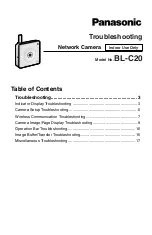
V1.02
Thom Hogan’s Complete Guide to the Nikon D300
Page 654
Maximum Number of Repeating Flashes at Each Power Setting
1/8
1/16
1/32
1/64
1/128
1-2
hz 14 30 60 90 90
3
hz 12 30 60 90 90
4
hz 10 20 50 80 80
5
hz 8 20 40 70 70
6
hz 6 20 32 56 56
7
hz 6 20 28 44 44
8
hz 5 10 24 36 36
9
hz 5 10 22 32 32
10
hz 4 8 20 28 28
20-100hz
4 8 12 24 24
7.
Set your shutter speed. It must be equal to or slower
than
Number of Flashes / Frequency of Flashes
. For
example, with 4 flashes at 8 Hertz, you’d need a
shutter speed of
second or longer.
8.
Note the distance displayed on the SB-800’s LCD.
(Note: changing the zoom head setting also changes
the shooting distance.) This is the flash-to-subject
distance you must use (e.g. if your subject is further
away than this distance, you’re going to have to move
closer or change your settings).
Note: Nikon’s flash documentation for repeating flash says the
exposure “is the correct exposure for the first flash in the
sequence.” Actually, it’s the correct exposure for each flash
in the sequence, but if your subject doesn’t move between
exposures, the overlap may result in overexposure. If you’re
in doubt, bracket (though in this case, you’d bracket the
number of exposures or frequency).
Also: place your subject against a dark background or
underexpose the background. Failure to do so may result in
one of two problems: (1) the background receives light
from the multiple flashes and becomes overexposed; or (2)
the subject appears to fade into the background (especially
true if you’re off by a bit in your distance). If in doubt,
bracket your exposures for the background!
















































